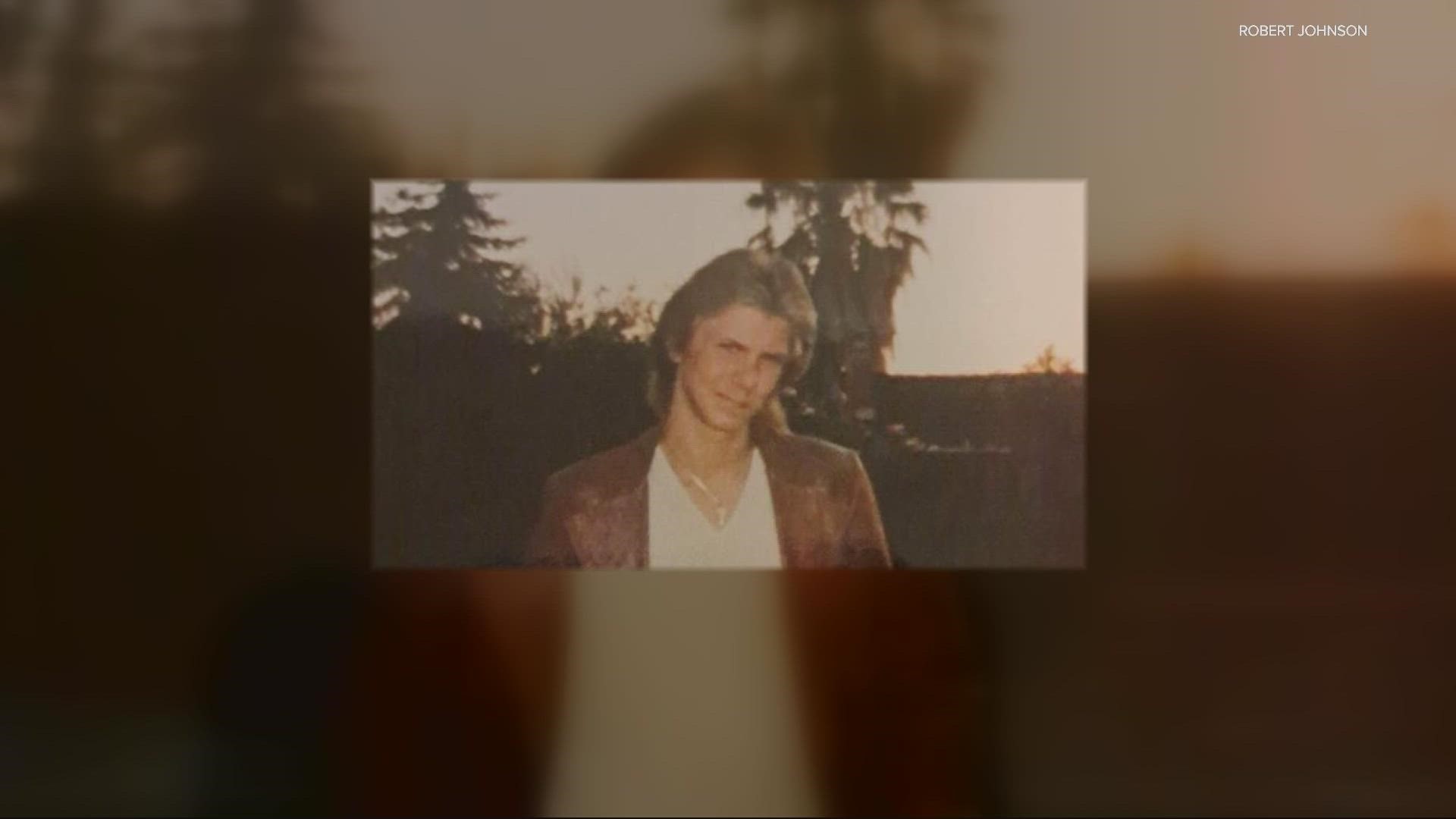CLARK COUNTY, Wash. — Investigators in Clark County have solved a 20-year-old cold case using DNA tracing. KGW spoke with a family member who said they're relieved to finally know what happened to their loved one and get closure, but it's been a hard road.
“I had already gone through just a death last week, and two years ago with my mom, now my brother might be dead. It's been rough,” said Robert Johnson.
For 20 years, Johnson never heard from his brother, James Orin Johnson.
“Unfortunately he had gotten into drugs and he was running with the wrong people again,” said Johnson. “Deep in my heart, I knew he wasn't around anymore.”
Even so, Johnson, who lives in Utah, said he never expected the call he got earlier this month from the Clark County Medical Examiner's Office. He said they told him that with DNA testing and forensic genealogy, investigators had discovered that a body that was found in Ridgefield back in 2002 after an apparent suicide belonged to his brother.


“Forensic genealogy is this new wave of scientific technology that we can rely on to start to get some leads. So in in this case, they gave us a lead,” said Nikki Costa, the operations manager at the medical examiner’s office.
The lead dated all the way back to a couple sisters in Oregon in the 1850s.
From there, Costa said it was a long process of going through all the branches of the family tree. A spokesperson said another staff member, Christine Holroyd, spent months contacting potential family members to see if they knew of a missing male relative, but nothing turned up.
OTHER STORIES: Cold case reopened in La Grande, Oregon 44 years later
After getting DNA from a descendent of those sisters in the 1800s, the search narrowed just enough for investigators to figure out which branch of the family tree to pursue.
“James Sr. was our unidentified person. James Jr. had done a test, I believe it was with ancestry.com, about five years ago,” said Costa.
Not all DNA databases give people the option to release their data to law enforcement and medical examiners, so Costa said the son, James Jr., uploaded his existing DNA data from ancestry.com to a company called GED Match, which had the option to share DNA information with authorities.
“They connected in a parent-child relationship as expected, so it helped triangulate,” Costa said.
For Costa, finding out the identity of the man in the cold case was a big moment.
“This is the only part of my job I truly love, which is chasing down answers, trying to follow leads, doing whatever we can and whatever I can to further an investigation and get closure and an answer,” Costa said.
Johnson said he's grateful for all the work.
“At least this way I get closure on it. I get to go forward with this. I can't imagine what the rest of my life would be like if I didn't ever know what happened to my kid brother,” he said.
Costa said people who use the GED Match and Family Tree DNA databases can be a huge help to resolving cold cases.

